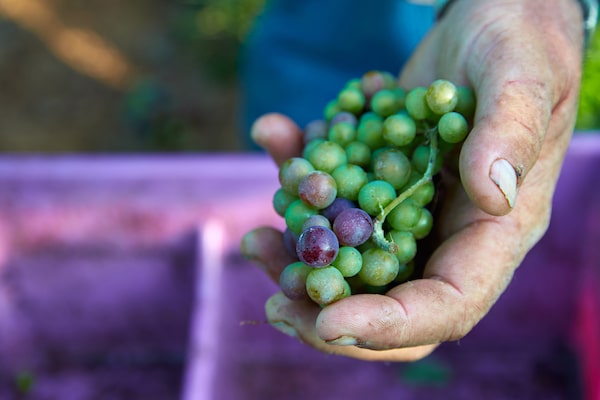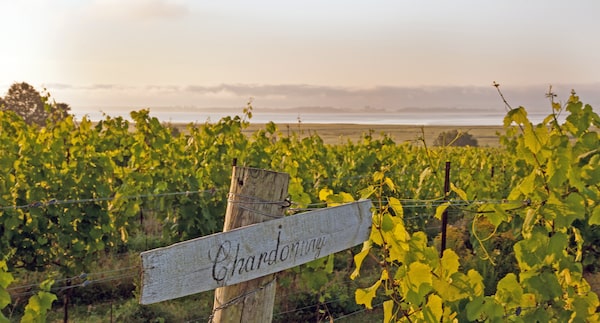
Sparkling wine has been part of the portfolio at Niagara-based 13th Street Winery since its launch in 1998.Handout
For more wine advice and reviews, recipes, restaurant news and more, sign up to receive our Good Taste newsletter in your inbox every Wednesday.
Moves to increase quality, innovation and production for Canadian sparkling wine is cause for celebration any day of the year. This July 1, I’m thinking that homegrown fizz is the best flag-waving wine to toast Canada Day.
Winemakers in Ontario, Quebec, British, Columbia, Nova Scotia and New Brunswick have become serious bubbleheads. They’re actively auditioning and adapting quality-oriented production methods, both new and old, to create a diverse assortment of sparkling wines.
Noteworthy sparkling wines are produced in Canada from the classic grapes of the Champagne region, chardonnay and pinot noir, as well as a wide assortment of other varieties, including riesling, pinot gris, gamay, cabernet franc and vidal blanc. That broad selection makes for tremendous a diversity of styles to enjoy across a range of growing regions and price points.
As a result, consumers have exciting options, from fresh and fruity styles to rich and refined bubblies looking to compete with the world’s best. More than 200 producers across the country have established sparkling wine programs, with wineries preparing to join their ranks with this year’s harvest.
This widescale embrace of sparkling wine has been fuelled by increasing commercial demand as well as greater resources available to master a style of wine that calls for greater investments of time and winemaking equipment. In some instances, it’s a matter of wineries operating in marginal, cool-climate locations embracing their destiny.

Family-owned Lightfoot & Wolfville farms two vineyards, one on the edge of Wolfville, N.S., and the other in nearby Avonport.steven elphick/Handout
The Champagne region in northern France was established on the performance-enhancing attributes of refermenting a highly acidic base wine to add bubbles and toasty complexity, which make for more a desirable and compelling drink for consumers to enjoy. That inspiration was the launching point for mouthwatering and exciting bottle-fermented sparkling wines coming from wineries in Nova Scotia, such as Benjamin Bridge, Blomidon Estate Winery and L’Acadie Vineyards, which are capturing local, domestic and international attention.
Credit must also be given to the rallying force of Fizz Club, a sparkling-wine network started in 2013 at Brock University’s Cool Climate Oenology and Viticulture Institute. Senior scientist Belinda Kemp has inspired numerous wineries across the country to add sparkling wine to their portfolio through a collegial trade-only group that exchanges ideas, tastes wines and studies the latest research. Kemp, whose office, the Bubble Lab, is a global leader in sparkling wine research and outreach work, also organizes technical tours to sparkling wine regions such as Champagne and Italy’s Veneto (where Prosecco is produced), where Canadian winemakers can study different methods of production.
Sparkling wine has long been part of the Canadian wine scene, but it remains one of its biggest opportunities for the future as the industry evolves. For that reason, and the fact that well-made sparkling wine is refreshing and delicious any time – be it Tuesday or a warm and sunny Canada Day afternoon – I’m ready to celebrate the rising tide of local selections that offer good value and taste.
Beautiful Bubbles: 12 Sparkling Wine Producers to Watch

Blomidon Estate focuses its production on traditional-method sparkling wines and crisp aromatic whites.SCOTT MUNN
- 13th Street Winery (Ontario)
- Bella Wines (British Columbia)
- Benjamin Bridge (Nova Scotia)
- Blomidon Estate Vineyards (Nova Scotia)
- Blue Mountain Vineyards & Winery (British Columbia)
- Fitzpatrick Family Vineyards (British Columbia)
- Henry of Pelham Family Estate (Ontario)
- Hinterland Wine Company (Ontario)
- L’Acadie Vineyards (Nova Scotia)
- Township 7 Vineyards (British Columbia)
- Trius Wines (Ontario)
- Lightfoot & Wolfville (Nova Scotia)
E-mail your wine and spirits questions to The Globe. Look for answers to select questions to appear in the Good Taste newsletter and on The Globe and Mail website.
 Christopher Waters
Christopher Waters